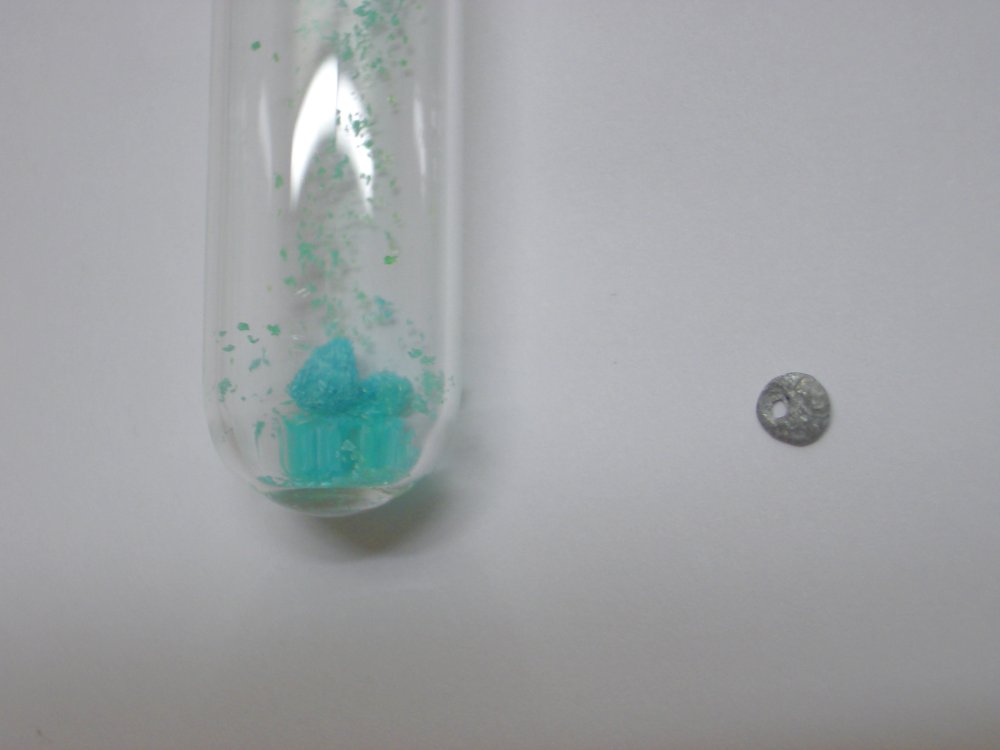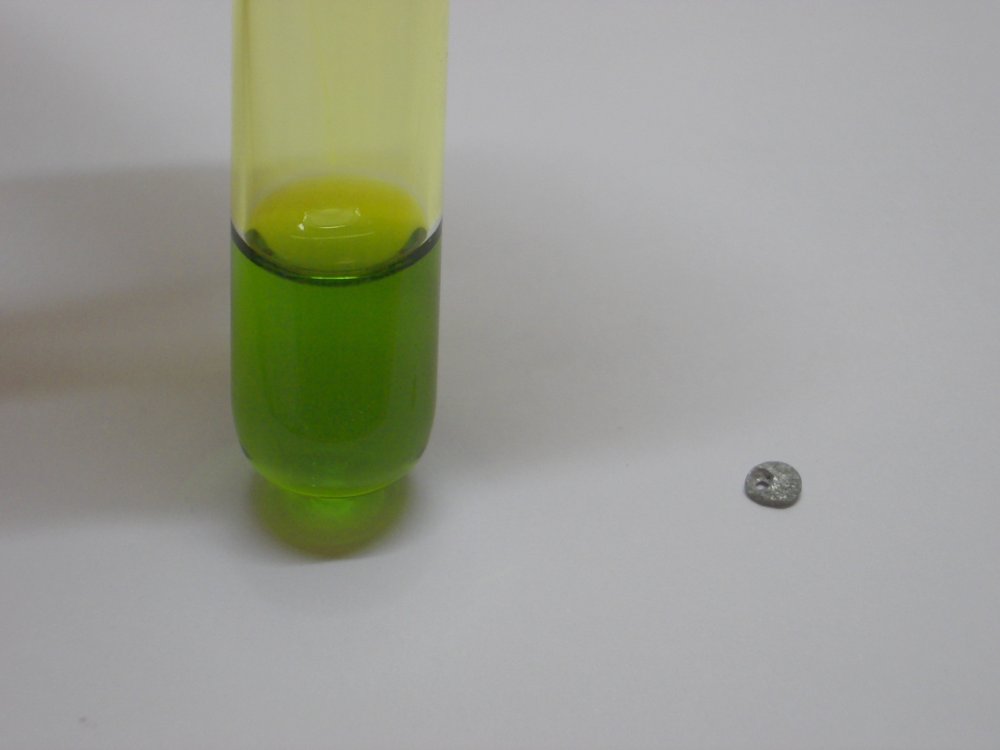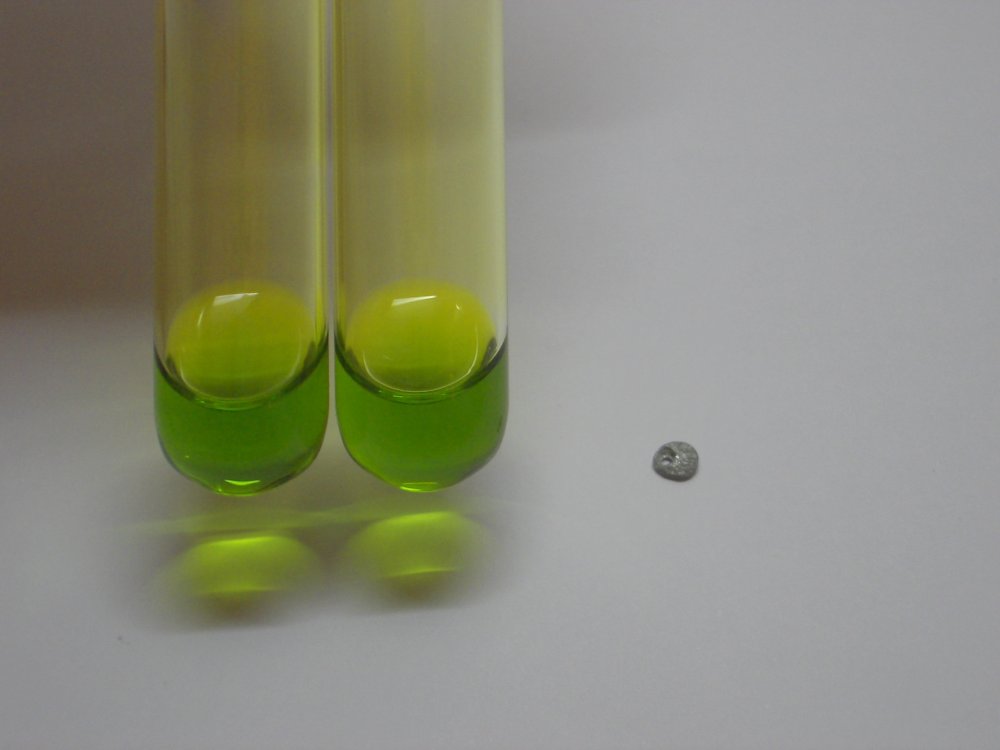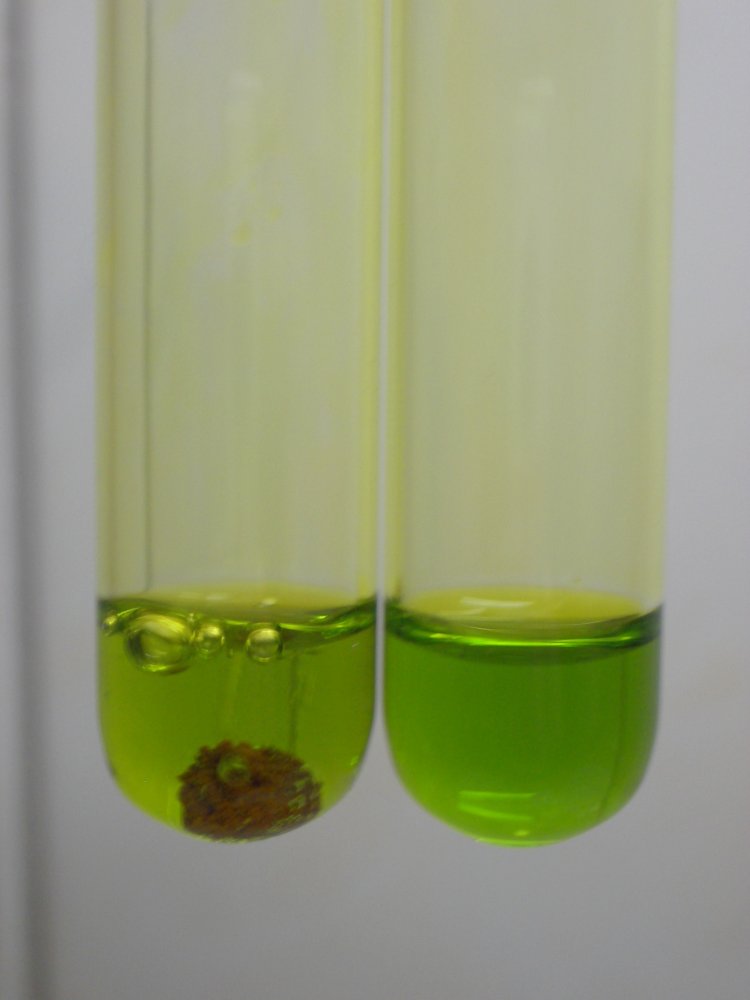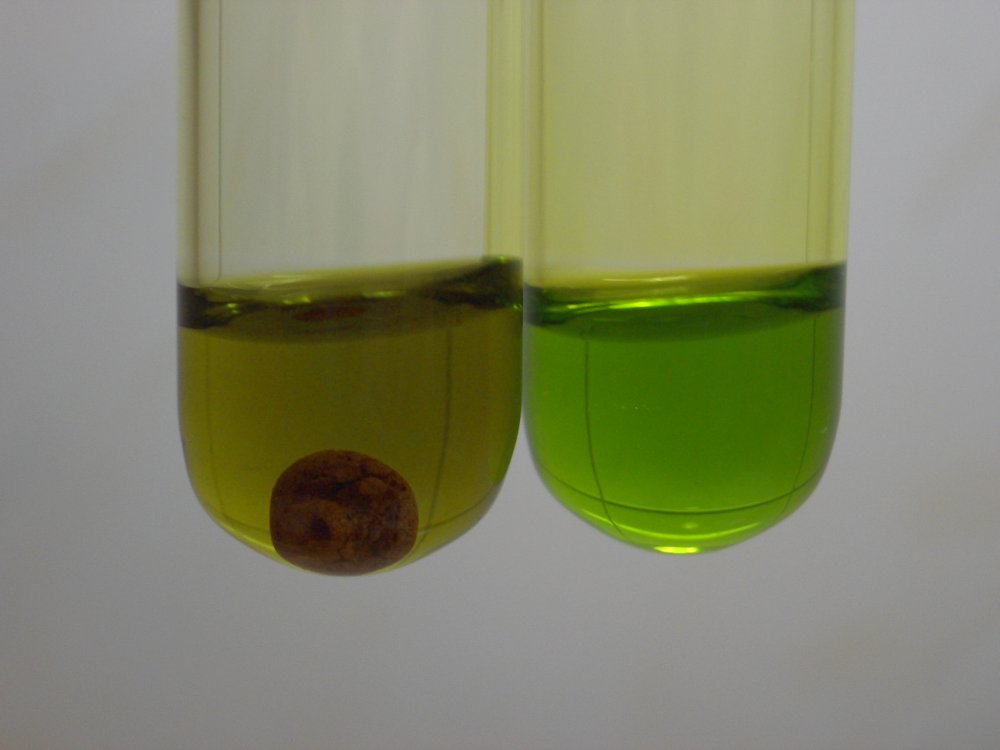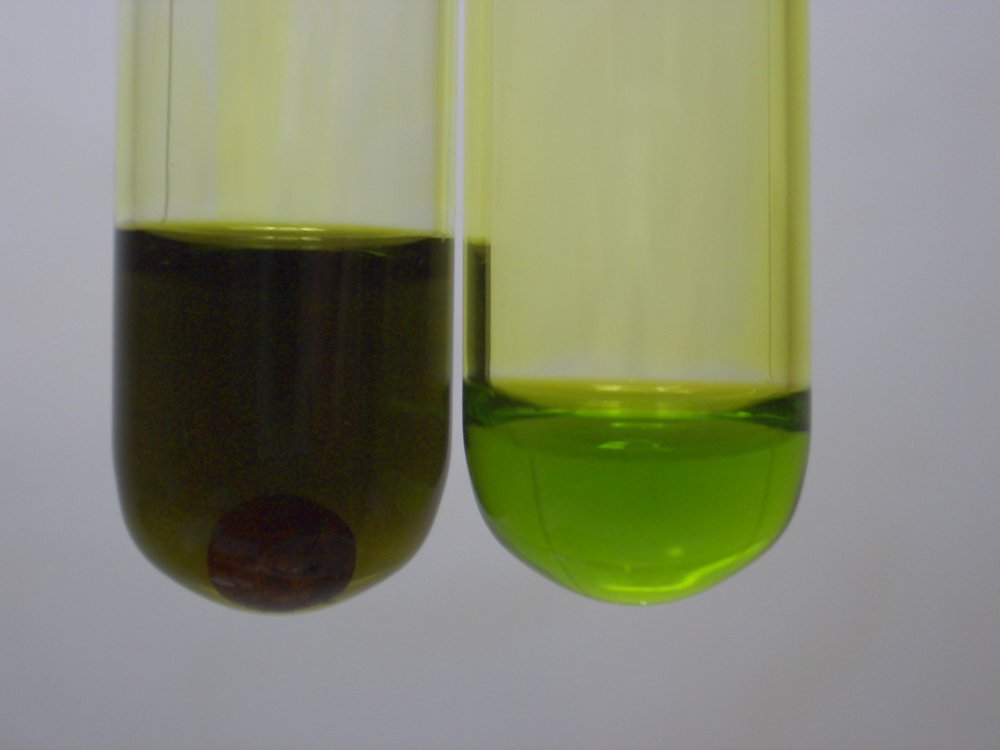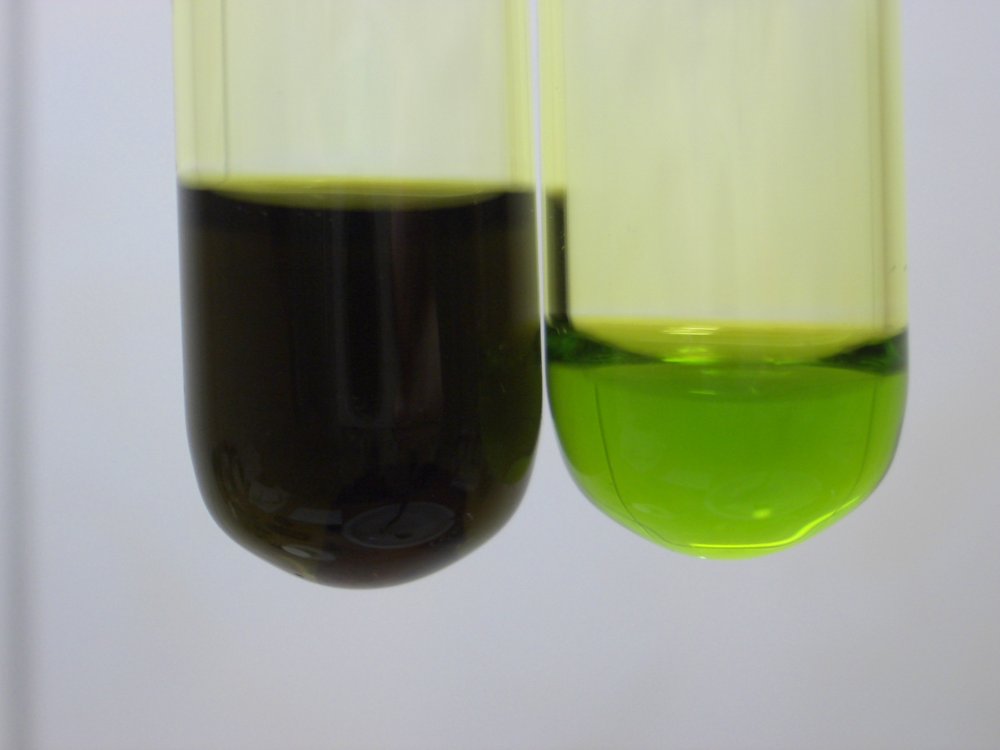
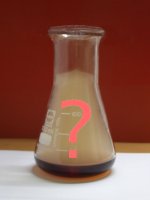

Change of oxidation state of copper, while maintaining concentration and pH
At this page, another experiment is described, with formation of a dark brown compound from copper (I) and copper (II). In this experiment, care is taken to keep the concentration of the copper and the pH of the solutions fairly constant during the experiment. The only relevant change is change of oxidation state of the copper. Because all experimental conditions remain the same during this experiment, this experiment provides strong evidence of the formation of a copper (I)/copper (II) complex.
![]()
![]() Required chemicals:
Required chemicals:
-
copper chloride, dihydrate
- metallic zinc, reagent grade
- concentrated hydrochloric acid, 30% HCl
![]()
Procedure for the experiment
Take some CuCl2·2H2O and a very small piece of zinc (reagent grade zinc is used, to assure that no other metals interfere):
Dissolve the copper chloride in some concentrated HCl (30%):
Divide the solution over two test tubes, approximately equal volumes:
Add the small piece of zinc to the left tube. The amount of zinc is very small, relative to the amount of acid, so the effect of dissolving this zinc, and possibly taking away some acid is small. A small amount of gas is produced (this is H2, due to reaction between zinc and acid). However, most of the zinc reacts with copper (II), forming metallic copper. The volume of the small piece of zinc increases considerably. This probably is due to formation of solid copper, which gets a sponge-like structure, due to the formation of H2-gas at the same time. One can see, that some copper is taken away from solution. The liquid in the left tube becomes a little lighter, but this is only marginal.
As soon as bubbling stops (and all metallic zinc is converted to Zn2+, the liquid becomes darker. Now the metallic copper and the copper (II) in the liquid start reacting. This reaction is slow and takes several minutes. A lot of shaking helps a little. Only part of the copper dissolves. This can be explained by assuming that almost all copper (II) in the left test tube is converted to copper (I). The picture shows the test tubes after several minutes of standing and occasional shaking. The left test tube is expected to contain copper (I) in solution, copper (II) in solution and probably some dark copper (I)/copper (II) mixed oxidation state complex. Besides that it contains invisible Zn2+.
At this point, the left test tube has a concentration of copper, which is somewhat lower than the concentration at the right tube (part is present as spongy metal at the bottom of the test tube). The pH will be practically the same in both test tubes, because the amount of acid is very large, compared to the amount of zinc, which took away H+ from the acid in the formation of H2.
![]()
Now approximately half the amount of the right solution is added to the left solution. This makes the total concentration of copper in the left test tube closer to the concentration of the right tube. Immediately after adding half the amount of the liquid in the right tube to the liquid in the left tube, the contents of the left test tube becomes dark. The piece of spongy copper metal can still be seen, but only vaguely.
After a minute of shaking, with the left test tube stoppered, such that no fresh air can enter that tube, the liquid becomes even darker. The picture below is taken with a shutter time, twice as long as for the other images (the background and the right test tube look a little lighter). Even with this longer exposure time, the left test tube looks almost black and the piece of solid copper can only be seen with great difficulty. This darkening can be explained by assuming that more copper (II) and copper (0) are converted to copper (I), resulting in formation of even more of the very dark copper (I) / copper (II) complex.
![]()
Discussion of results
This experiment shows that copper (I) and copper (II) react to form a dark compound. It is assumed that the Zn2+ in the liquid does not interfere with the dark brown compound. This assumption probably is valid, because the dark brown compound also is formed without the zinc.
The hypothesis that the dark brown compound is due to CuCl42- at other concentration or other pH than in the right test tube hardly can be maintained, because the conditions in the left test tube are very similar to the conditions in the right test tube, the only important difference being the oxidation state of part of the copper.
Remark: For this experiment it is best not to use copper sulfate instead of copper chloride. Sulfate ions can be reduced to sulfide by zinc. Sulfide, in turn, may form black copper sulfide, even at the highly acidic conditions of this experiment.
Remark2: The hydrochloric acid is essential for this experiment. When a similar experiment is done with copper sulfate, dissolved in 30% H2SO4, then on addition of a piece of zinc, some metallic copper is formed and no other reaction can be observed. The liquid remains sky-blue in that case.
back to main copper riddle page
